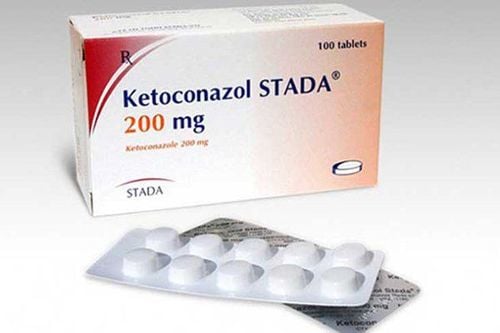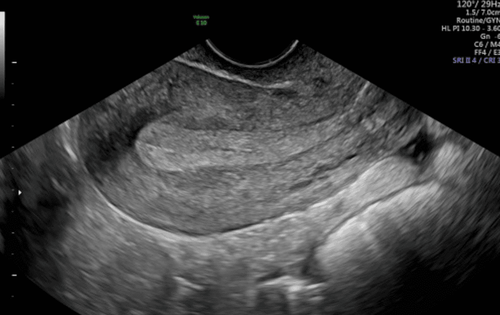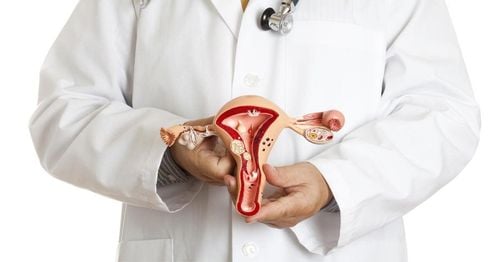This is an automatically translated article.
Mucous membrane is a thin lining membrane but plays an important role in our body. Mucous membranes are present in many organs and parts of the body. In each organ, the mucosa will have distinct roles, although they still have certain things in common.
1. What is mucosa?
The mucosa, also known as the mucous membrane, is a lining derived mainly from the endoderm. The mucosa is composed of:
An epithelium: is a layer or layers of epithelial cells. A membrane of connective tissue (propria lamina) lies underneath the loose connective tissue. Mucosal linings various cavities in the body, or outside of the body, it comes into contact with the environment or internal organs, and the mucosa keeps the underlying connective tissue membrane moist. They are located in several places near the skin: the nostrils, the lips of the mouth, the eyelids, the ears, the windpipe, the stomach, the genital area, and the anus. The mucosa has a role in preventing pathogens and dirt from entering the body and preventing the body's tissues from losing moisture.
The mucous membranes are quite fragile, they can absorb a number of substances including poisons and they can be painful. If the mucosa is torn or damaged, the mucus it secretes is capable of performing its role in preventing infection and retaining tissue moisture.
The mucosal surface is characterized by the presence of supernatal mucosal fluids, e.g. saliva, tears, mucus in the nose, stomach, cervix and bronchi, their functions include It contains various types of immunomodulators and supports healing including growth factors, antibacterial proteins and immunoglobulins.

Niêm mạc có tác dụng bảo vệ ngăn chặn mầm bệnh và các chất bẩn thâm nhập vào cơ thể
2. Where is the mucosa located?
Mucosal are located in several places adjacent to the skin. For example, in the ears, eyes, nose, lips, mouth, trachea, stomach, anus, genital area...
In women, the top of the clitoris and the hood of the clitoris have a mucosal layer. In men, the glans of the penis and the inner layers of the foreskin are covered by a mucous membrane. The urethra is also lined with a lining.
Some mucosa is involved in digestion in absorbing substances from insoluble food and excreting chemicals from the glands. The thick fluid secreted from a number of mucous membranes and/or connective glands is called mucin. This mucus may have protective properties.
3. What is the role of the mucosa in the body?
The mucosa acts as a membrane covering all parts of the digestive, respiratory, reproductive systems... This mucosa contains mucus that works against bacteria, viruses, fungi or organs from the bad effects of body fluids.
This mucosal layer, although very fragile, has the ability to prevent pathogens and dirt from entering the body. At the same time, the mucosa can also keep warm and help the body's tissues not lose moisture. In addition, the thin mucosal layer has the ability to absorb toxic substances, but it can cause inflammation and pain. In case the mucosa is damaged, torn or damaged, the mucus will perform the function of preventing inflammation and moisturizing the tissue instead of the mucosa.
The mucosal surface forms the body's interface with the external environment and plays a central role in immune surveillance and protection against infection. The mucosal surface has the presence of a semi-permeable epithelial barrier that is reinforced by a variety of innate and adaptive immune mechanisms.
A large number of lymphocytes reside beneath the epithelium that protect against microbial invasion and mediate immunity to disease.
In addition, the mucosal surface is also home to an integrated microbiome, a diverse community of bacteria that contributes to our health but must also be controlled by the immune system in these areas. this area.
In general, mucosal surfaces provide an essential barrier between the body and the external environment and are characterized by new adaptations required to protect this barrier.
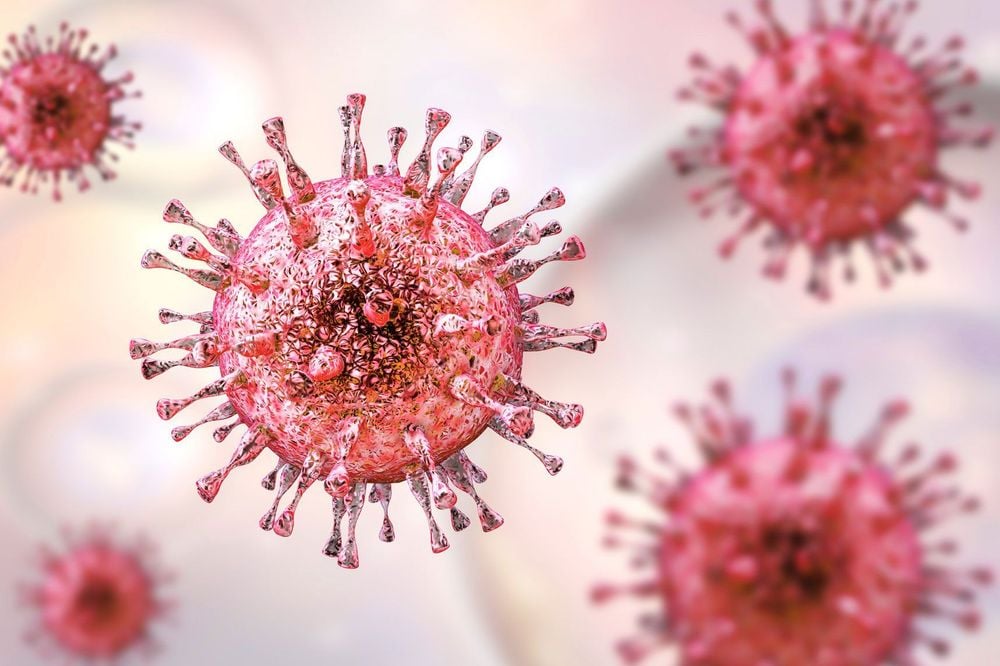
Bề mặt niêm mạc cũng là nơi cư trú của hệ vi sinh vật kết hợp
4. Types of mucous membranes in the body
In the body, there are many different types of mucosa such as:
Uterine mucosa Oral mucosa Nose mucosal Stomach mucosa Small intestine mucosa Eye mucosa Tongue mucosa ... At each location, the mucosa will have some specific structural features and additional specialized functions of that organ or part. Specifically:
4.1. Endometrium
The lining of the uterus is often called the endometrium. This is a layer that covers the entire inner surface of the uterus. The lining of the uterus plays an extremely important role in conception, protecting the development of the fetus in the womb.
The uterine lining is composed of 2 parts:
The basal layer, also known as the basal endometrial layer: it includes stromal, columnar epithelial cells. This layer is not subject to any effect of the menstrual cycle in women. The superficial layer is also known as the endometrial layer: this layer is greatly influenced by the menstrual cycle. SEE ALSO: How thick is the uterine lining to get pregnant?
If the uterine lining is thicker than 20mm, it is called thick endometrium. At that time, it is often difficult for a woman to get pregnant. Because the formation and development of the uterine lining is influenced by the amount of estrogen in the female body.
If the lining is thinner than 7-8mm, it is called thin endometrium. At that time, it will also be difficult for the woman to get pregnant because the uterine lining is too thin, making it difficult for the fetus to implant. Or if the implantation of the embryo is normal, the ability to keep it in the uterus is also extremely difficult.
The normal uterine lining will change with the menstrual cycle as follows:
In the period just ended the period: the uterine lining is 3-4mm thick. The middle of the menstrual cycle is also close to ovulation: the uterine lining is 8-12 mm thick. In the period about to menstruate: the uterine lining is 12-16mm thick. If the egg is not fertilized, the lining will shed, causing menstruation.
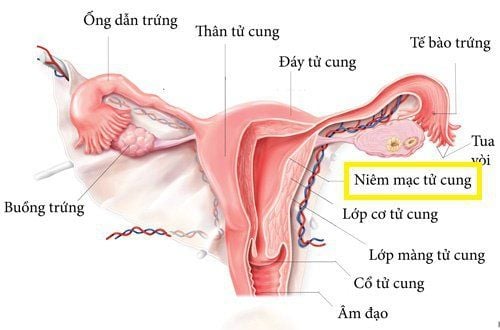
Niêm mạc tử cung có vai trò vô cùng quan trọng trong việc thụ thai
4.2. Oral mucosa
Oral mucosa is the mucosal layer that covers the oral cavity. Oral mucosa can be damaged by many different causes such as:
periodontitis, pulpitis or tooth decay. Fungal, bacterial and viral infections External trauma Allergies to certain drugs Carcinoma Autoimmune diseases
4.3. Nasal mucosa
The nasal mucosa is the membrane that covers the entire inner wall of the nose and all the sinuses associated with the nose. The nasal mucosa is easily damaged and edematous. At that time, the openings of the sinuses that drain into the nose are partially narrowed or completely covered, causing rhinitis.
The nasal mucosa is divided into 2 layers:
The olfactory layer is also called the upper layer: the position from the attachment point above the curly bone upwards, this part accounts for 1/3 of the nasal mucosa. The olfactory mucosa is gray-brown or yellow. Respiratory layer or lower layer: is located in the area below the upper nasal spiral, the mucosa of this part accounts for 2/3 of the lower nasal mucosa, has a red-pink color.
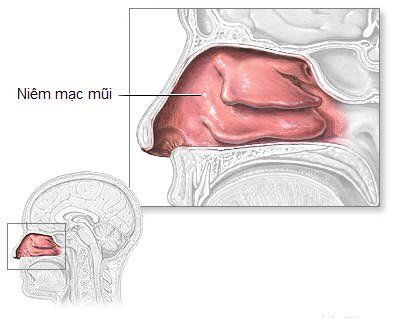
Hình ảnh niêm mạc mũi
4.4. Stomach mucosa
The gastric mucosa is the membrane that covers the inside surface of the stomach. This mucosal layer has a protective effect on the stomach by absorbing toxic substances that can cause stomach damage. Besides, this mucosal layer also helps the connective tissue to always ensure the necessary moisture.The gastric mucosa may be damaged leading to medical conditions such as gastritis, gastric ulcer, duodenal ulcer... Then, the patient may appear symptoms such as:
Abdominal pain Nausea, vomiting Fatigue Loss of appetite, anorexia sour, belching Black stools: a case of severe ulcers causing stomach bleeding.
4.5. Eye mucosa
The lining of the eye is the membrane that covers the white part of the eye (sclera). The lining of the eye is susceptible to inflammation that causes conjunctivitis, commonly known as pink eye.
The cause of inflammation of the eye mucosa is caused by viruses, bacteria, allergies or irritation by dust, smoke... Mild inflammation will not damage the eyeballs and will not affect vision.

Bệnh viêm kết mạc là tình trạng niêm mạc bị viêm nhiễm
4.6. Tongue mucosa
The mucosa of the tongue is the layer of cells that covers the tongue. This mucosal layer can be infected by viruses, Candida albicans ... To prevent inflammation of the tongue mucosa, you need to clean your teeth and tongue daily, properly.
Mucous membrane is a thin layer of lining but plays an important role in our body. They are present in many departments and perform different functions and tasks. Protecting the mucosa is also a way to protect health and prevent many inflammatory diseases.
Please dial HOTLINE for more information or register for an appointment HERE. Download MyVinmec app to make appointments faster and to manage your bookings easily.
References: sciencedirect.com, medlineplus.gov




